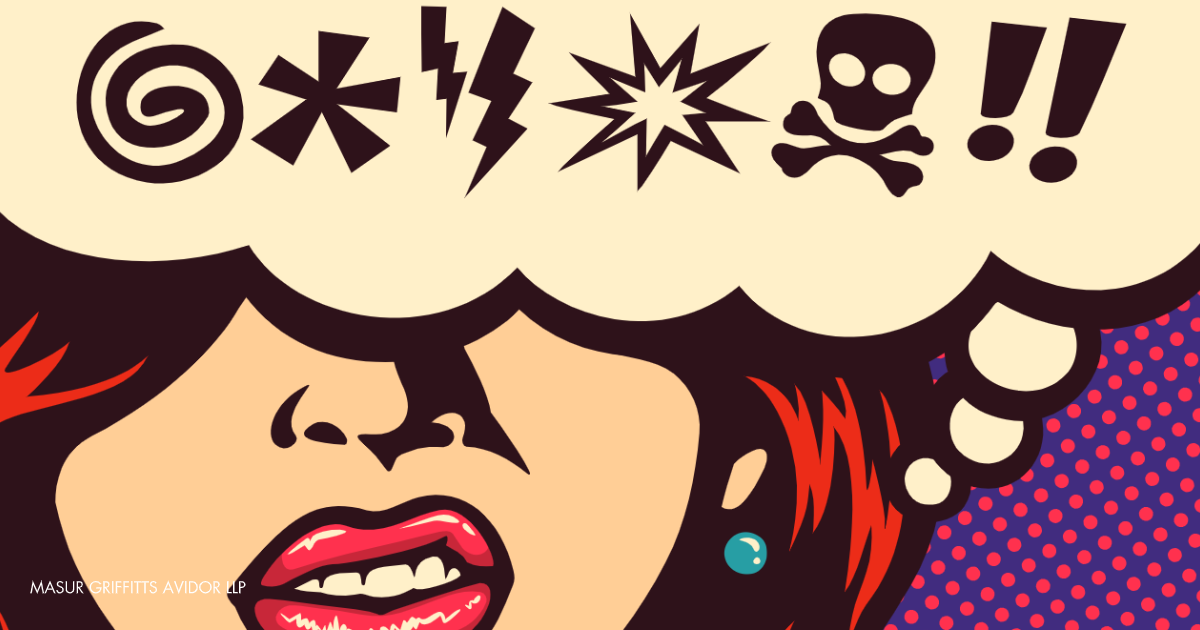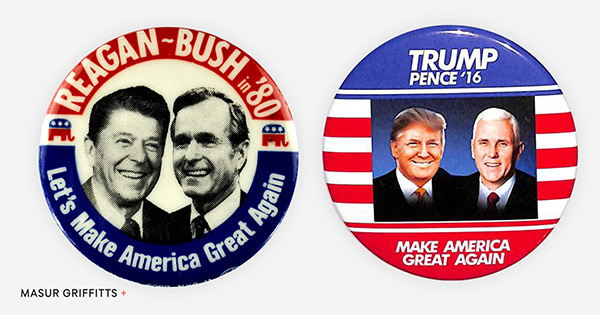(Trade)Marking Your Territory
By: Jon Avidor and Sarah Siegel
A strong trademark or service mark can become a valuable asset for your business, so when you come up with a great name or memorable tagline for your product or service, it makes sense to register the trademark. Common law trademark rights originate from use in commerce so all you have to do is use the particular name, word, phrase, logo, symbol, design, color, or sound in association with your good or service to establish priority ownership. However, obtaining a federal statutory registration from the United States Patent and Trademark Office (USPTO) heightens a trademark user’s ownership claim. It prevents later registrations of the same or similar marks and presumes the trademark’s legal validity, the owner’s exclusive right to use its mark nationwide, that the public is on notice, and that the marketplace associates the mark with its goods or services. Registration is a powerful deterrent to infringement and increases the value of a trademark.
Creating a Strong, Distinctive Mark
The first step in obtaining a trademark is to, well, create the trademark. Distinctiveness is the foundation of a protectable mark. Trademarks are evaluated along a spectrum of distinctiveness as shown below that correlates to whether an average consumer would likely associate the mark with the goods and/or services, as well as the producer and brand. In choosing a mark, the word or phrase should set your brand apart from competitors or anyone else in the marketplace so your trademark will be easier to protect and enforce.

A generic mark, like COMPUTERS for your line of personal computers, would not be protectable because it could refer to any old product and would prevent anyone else in the industry from using that general term for its PCs. Unless consumers have come to associate a descriptive mark with a certain brand, a mark that simply describes a product or service’s qualities, like ALL-BRAN CEREAL for bran cereal, would not warrant protection either. A stronger mark would be one that is either suggestive of the good or service’s qualities, arbitrary in its association with the good or service, or invented for the purposes of the trademark. For example, JAGUAR for automobiles would be suggestive of a car’s speed and agility; APPLE for computers, rather than fruit, would be arbitrary; and KODAK, whether used for photography equipment or not, is a fanciful, made-up word. Each of these are considered strong marks.
Be One-of-a-Kind and Be Sure of It
In addition to being a distinctive source identifier, to receive protection, a trademark must not be “confusingly similar” to any preexisting or preregistered mark for goods or services in the same or similar markets. The USPTO will deny or, if litigated, a judge will invalidate a trademark if an average consumer is likely to believe that the source of the goods or services is the same as that of another, senior trademark. It’s not enough to change a few letters or intentionally misspell an existing mark; your mark must look, sound, and feel different and distinct.
Before building your brand around a particular trademark, you should ensure the mark does not infringe upon another similar or exact trademark registered or already in use. You can search the USPTO database for applications and registrations for potential conflicts with your trademark, or possible variants, and use a search engine for common law trademarks. For a more extensive search, especially for the trickier-to-search “confusingly similar” marks, you should hire an attorney who is experienced in trademark law and can make use of more sophisticated searches and skilled analyses.
Use the Mark and Renew the Mark
Once granted, a trademark registration puts the public on notice that the mark is yours and should not be infringed upon. However, you must use your mark in commerce to secure or perfect your trademark rights—it’s use it or lose it. Trademark abandonment occurs if the mark’s owner either intentionally stops using the mark or otherwise discontinues its use for a continual three-year period. Whether abandonment is intentional or presumed, the lapse in use may strip the mark owner of its previous trademark protection.
To retain its federal trademark registration, the owner must file a Declaration of Use or Excusable Nonuse for the trademark between the fifth and sixth years following registration and a Combined Declaration of Use or Excusable Nonuse and Application for Renewal within one year before the end of each ten-year period after registration. Failure to adhere to the post-registration maintenance requirements and renew the trademark in a timely manner will result in cancellation and/or expiration of the registration. Note, however, that common law trademark rights will continue so long as the mark is used in commerce, even if the registration is cancelled or expired.
…and Use It Wisely
Using the mark is important, but using it correctly is critical. A pitfall of highly effective brand PR and marketing is your trademark becoming too popular and acquiring mind share. When the public begins to use a trademark to refer to the general product or service, rather than brand of product or service originating from the trademark owner, the trademark loses its meaning as a source-identifier and, with that, its legal protection. Examples of terms that have famously lost their trademark protection as a result of genericism include “aspirin,” “dry ice,” “escalator,” and “linoleum.” Some marks that are at risk for losing their protection include COKE for cola, GOOGLE for search engines, KLEENEX for tissues, PHOTOSHOP for photo editing generally, Q-TIPS for cotton swabs, TASER for stun guns, and XEROX for photocopy machines. The more famous the mark, the greater risk that mark faces of losing its distinctiveness and protection. Many of these brands even actively campaign to the public to remind them not to use the marks too generically.
Beware of Infringers
If your mark is strong and your product is reputable in the marketplace, others in the industry will inevitably attempt to piggy-back on your brand and customer goodwill. Cue the infringers. Trademark infringement occurs when another producer uses your mark, or a mark “confusingly similar” to yours, to sell goods and services that are not your own, thereby confusing consumers regarding the source of the goods or services. This can happen willfully or innocently.
Not only is trademark infringement illegal, it can threaten your claim to the trademark if too many people begin to capitalize on your mark and consumer goodwill. As the trademark owner, it is your responsibility to police your trademark and bring enforcement actions against any potential infringers lest you surrender your trademark rights. In two famous cases, Pepto-Bismol lost its claim to its distinctive pink coloring to other antacid producers but Christian Louboutin preserved its rights to its trademark red lacquered bottom shoes, with a key difference being whether the owners actively policed their trademark rights.
An easy way to keep track of your trademark is to set up Google Alerts™ notifications for your mark so that you will be notified any time your trademark is used online. You can also keep a close eye on the USPTO’s weekly publication, the Trademark Official Gazette, for trademark applications under consideration and oppose any published mark within 30 days if you believe the applied-for mark’s registration would infringe on your trademark.
If Trademark Official Gazette is not on your “must-read” list or this process seems too meticulous for one person, consider using a service that patrols your mark that will catch and resolve any potential infringement before substantial damage occurs. Third-party trademark watch services monitor potential infringement across multiple platforms, including the USPTO database, foreign trademark databases, and the Internet and social media sites. A monitoring service takes the pressure off the mark owner and allows an experienced trademark team to patrol your mark on your behalf.
With Great Power Comes Great Responsibility
The mere fact that a mark is protected by law does not magically prevent infringement. Trademark protection only works if it is properly enforced. As the proud owner of a trademark, you must decide how much money you are willing to spend on enforcing the mark and protecting your brand.
One way to deter infringers is to send a cease-and-desist letter asserting ownership rights and demanding the infringing use stops immediately or else risk a lawsuit. A cease-and-desist does not initiate a lawsuit, though it may scare the infringer into believing the owner is prepared to sue, which can be a cost-effective route to stop the infringing use.
Of course, you can also bring a lawsuit for trademark infringement and unfair competition, which if you win, may result a legal order instructing the infringement to stop (an injunction) and/or monetary damages for brand damage and lost sales or the infringer’s profits. However, litigation can be costly and time consuming and creates a financial burden for the plaintiff that might last months or years before settlement or adjudication. See Lex Machina’s Trademark Litigation Report 2016 for an insightful analysis of litigation trends from 2009 to 2016, including leading parties, causes of action, remedies, judgments, and damages.
However, you might not want to take any action against the potential infringer if, for example, you don’t believe the infringement threatens your market share or your goods or services. Recall though that failing to police your trademark against infringements may result in loss of your trademark rights by dilution.
Conclusion
Effective trademark protection starts at the very beginning and continues through the mark’s commercial use. A strong and distinctive trademark that leads consumers to associate a brand with its mark is easier to protect than one that is too generic or descriptive. When infringers take advantage of the goodwill built up around your brand, consider your legal options to enforce your trademark rights, and protect your mark. However, the best offense is a great defense, so consider using a trademark monitoring service to catch potentially damaging infringement before it tarnishes your mark.









